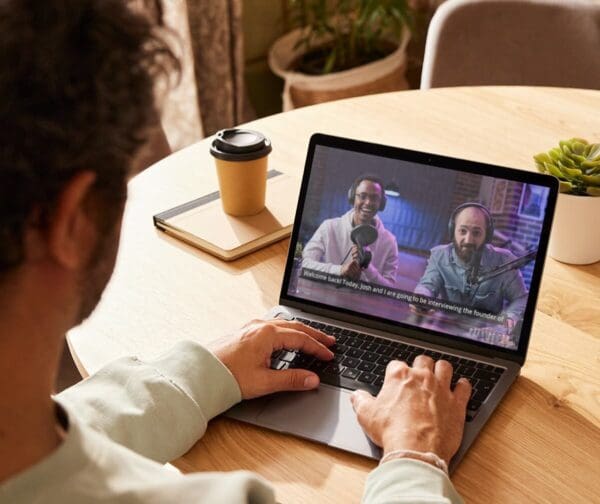
Sign Language vs Captioning
Sign Language vs Captioning
Approximately 20,000 Deaf people in Australia prefer Auslan (Australian Sign Language) as their first language. Auslan has it’s own syntax, grammar and lexicon just like any other language. Facial expression plays an important role in communicating in Auslan as it conveys the tone of the message. The morphology of Auslan is defined by five parameters: hand, shape, orientation, location, movement and expression. Auslan is not English, although it does use the English alphabet in some instances, such as spelling out names and locations. The grammar, syntax and linguistic structure of Auslan are vastly different to that of English. One basic grammatical structure commonly used in Auslan takes the ‘topic and comment’ form, which is quite similar to a number of Asian languages. In Australia, English is often a second language for Deaf people.
So, the question comes to whether sign language or English captioning should be used as a medium on media platforms to provide the best accessibility for the Deaf community. We need to first consider two important factors: Prelingual deafness and Post-lingual deafness. Due to these two factors, it is clear that not every deaf person has the same communication preferences. It depends on a person’s fluency in either English or Auslan. Let’s take a look at the benefits of captioning and sign language and who they provide access for.
Sign language
Pre-lingually deaf people or culturally Deaf people usually learnt Auslan as their first language and English as a second language later in life. Therefore, they feel more comfortable and have a higher level of comprehension in Auslan or via the use of an interpreter. Sign language would be the preferred choice in general for pre-lingually deaf people.
Captioning
Post-lingually deaf people have become deaf later in life, so they are often more comfortable communicating in English. They may have little or no knowledge of Auslan and generally prefer captioning on television or on any form of video and media. Their preference for accessibility is most often captioning.
How can we ensure something is fully accessible for everyone?
Due to people’s differing backgrounds, preferences and first languages, it is often best to provide both Auslan interpretation and English captions to ensure accessibility for everyone.